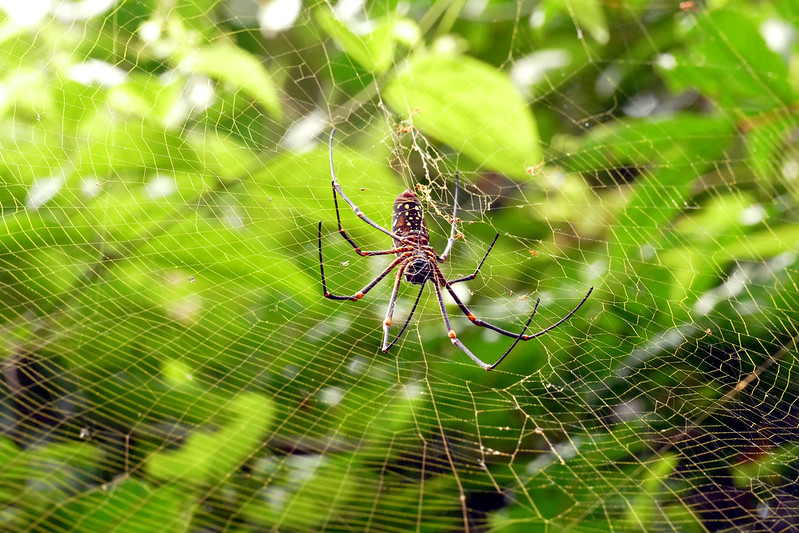Self-aware spiders: fascinating arachnid builds its own lifelike decoys
14 March 2018
They are often seen as creepy and widely feared yet spiders are an essential part of the natural world and may even have a sound understanding of their own place in it.
Spiders are literally everywhere. They are found worldwide on every continent except Antarctica, and have become established in every habitat apart from the sea.
Their primary role in the ecosystem is controlling insect populations.
Some varieties, like orb weavers, do this through passive hunting on their signature webs. Others, like wolf spiders, do this through active hunting and don’t use webs at all.
Since many species remain active during winter, they help reduce insect numbers early in the agricultural season, giving farmers, horticulturalists and gardeners a head start as the growing season begins.
And while spiders are the bane of insects everywhere, they too are a staple food source for a variety of birds, lizards, wasps, and mammals, ultimately helping to maintain global species diversity.
Humans have long marvelled at the intricate architecture of spider webs, but one of their greatest tricks has gone widely unnoticed and has possibly confirmed they have the mental capacity to be mentally self-aware.
Self-awareness is the capacity for introspection and the ability to recognise oneself as an individual separate from the environment and other individuals.
The capacity for self-awareness has been extensively studied in animals such as elephants, primates and cetaceans but there is little knowledge of this capacity in animals such as spiders and other invertebrates.
But new evidence now provides us with a strong argument to suggest that animals such as spiders are just as self-aware as we are.
Deep in the Peruvian Amazon, a spider of the Cyclosa genus builds an intricate, lifelike replica of itself constructed from leaves, dead bug parts, and other scraps.
The lifelike replica is created as a spider decoy to deter would-be predators. They arrange debris along specialised silk strands on their web in a symmetrical form that makes it look almost exactly like a larger spider hanging in the web.
The presence of the decoy provides these spiders with a higher survival rate against potential predators like paper wasps because the wasps end up attacking the debris in the web rather than the spider itself.
For a spider to make a decoy statue of itself out of twigs and leaves, it must understand itself as an individual separate from the environment and from other individuals. It must know what it looks like, and that it sits in a web, and must know how to create the structure which represents itself – anecdotally demonstrating their capacity for self-awareness.
So rather than being an animal that many of us fear, spiders are in fact an animal for us to revere. Next time you see a spider on its painstakingly created web, think of the capacity these animals have to understand themselves and their own world, and the good they may be doing to help to control insect numbers in your garden.
BACK






